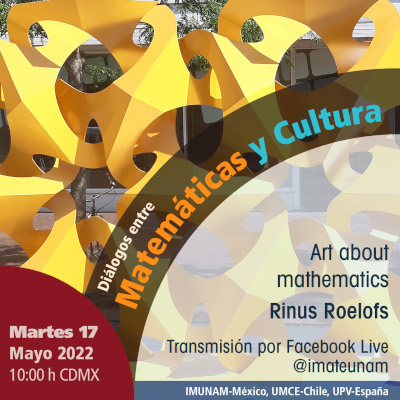Título: Art about mathematics.
17 de mayo
Conferencista: Rinus Roelofs
Resumen:
Visualization of mathematical ideas has always been an important part of mathematics. It is interesting to see that also some artists have developed new visualization tools for mathematics.
In 1525 Albrecht Dürer published his book “Unterweissung der Messung mit dem Zirckel und Richtscheyt”. In the fourth part of this book we can find several plans of regular and semi- regular polyhedra. It is, as far as we know, the first time plans of polyhedra were published. By presenting both the unfolded and the folded version of the Platonic solids, as two drawings next to each other, Albrecht Dürer visualized the relation between the 2D folding plan and the 3D final model of a polyhedron. In this way Dürer describes the process of folding these polyhedra, which he also explained in the accompanied text in the book. A process which we nowadays illustrate using animation. The book is meant to be a source of knowledge and inspiration for painters, sculptors and craftsman. There are a few more examples of artists who made contributions in the field of visualization of mathematics. You can think of Leonardo da Vinci an Maurits Cornelis Escher. So people who are not mathematicians, people who look at mathematics in another way then mathematicians do.
For me that was one of the raisons to a PhD on mathematics, although I was not a mathematician but an artists. Based on Albrecht Dürer’s polyhedral plans I started to make animations of folding polyhedra, both as a visualization of mathematics and as an art project to show the beauty of the mathematics of polyhedra. I found new ways to visualize the more complex Kepler-Poinsot polyhedra and some other uniform polyhedra. I even discovered a new series of uniform polyhedra.
Temas:

